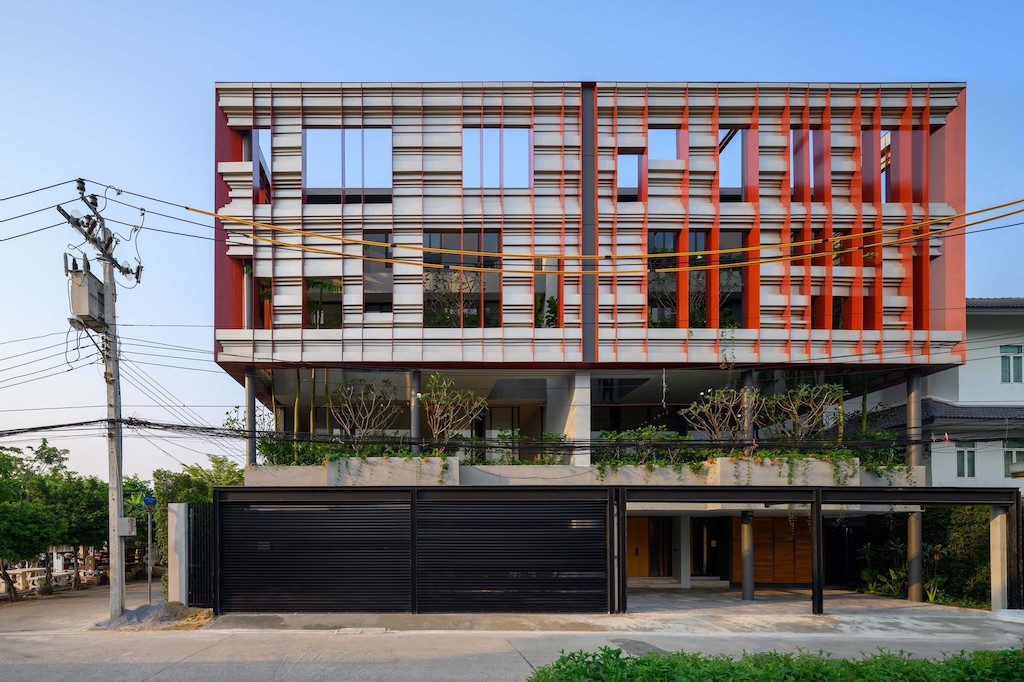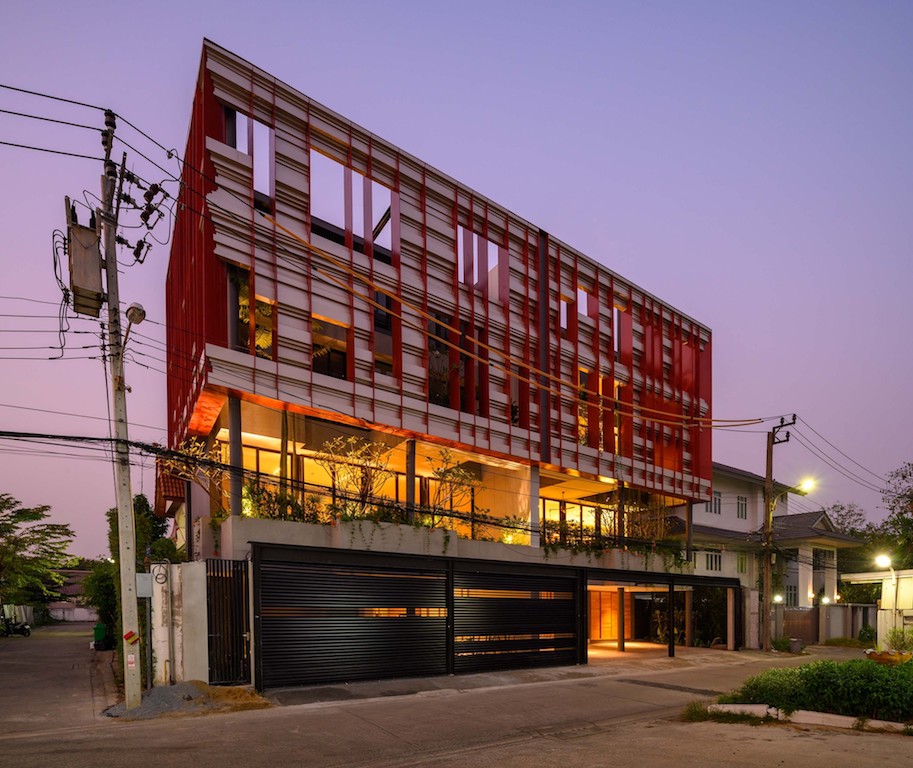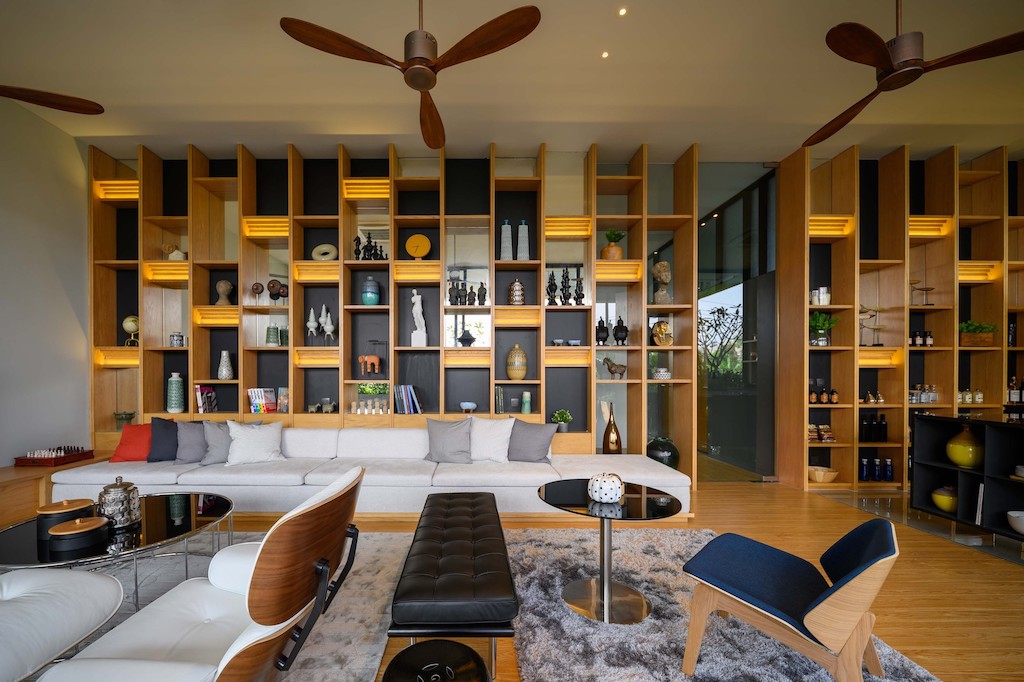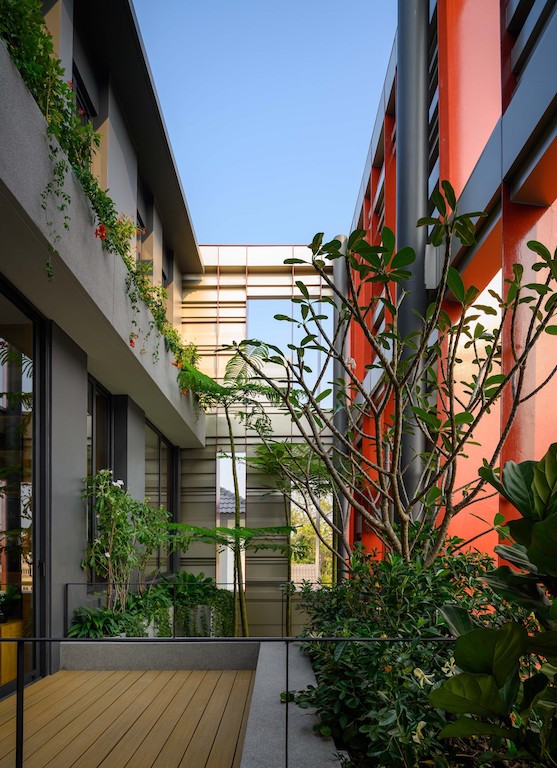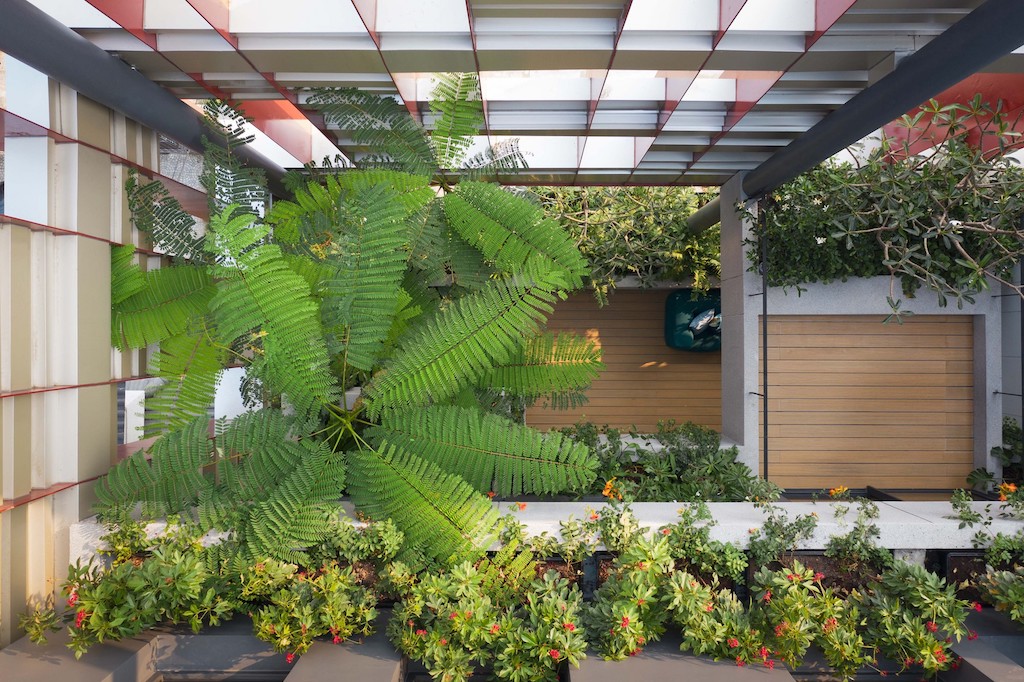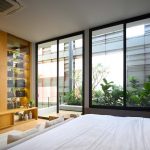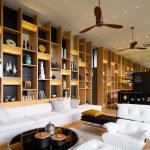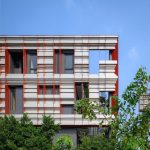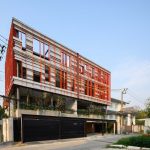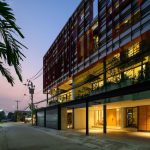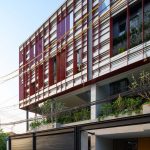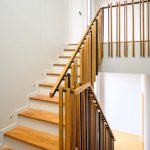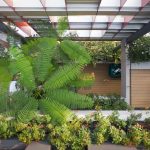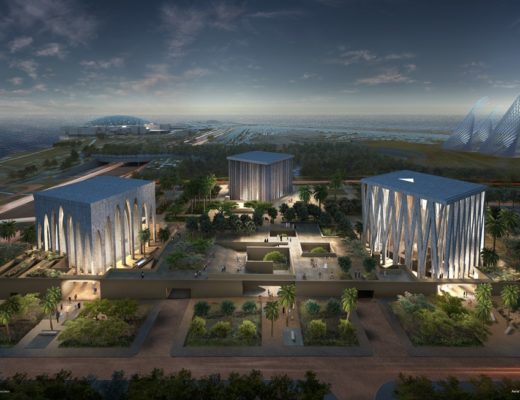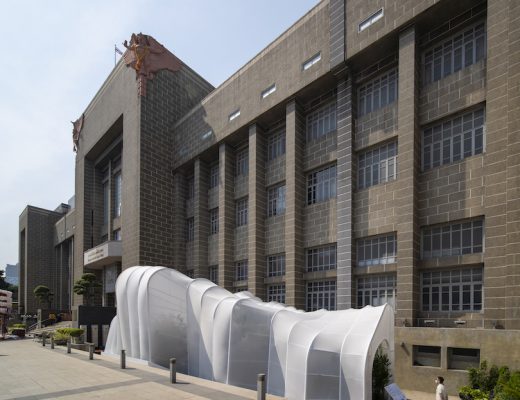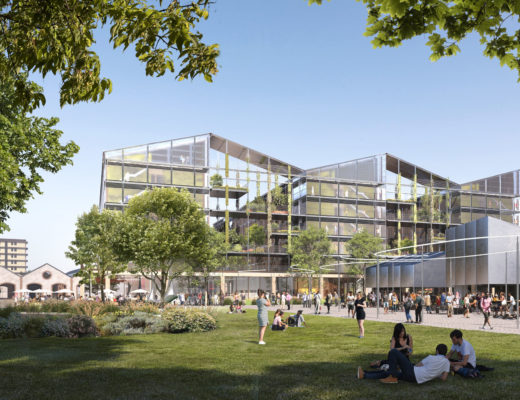Located in central Bangkok’s Lat Phrao district known as a hipster enclave filled with bars, farmer’s markets, cafes and boutiques, High Garden is a low-rise residential project by Baan Puripuri. The four-storey semi-detached house has been designed to suit urban lifestyle and create a dialogue between the urban context and nature. Built on a compact site measuring 400m², the project was led by architects Pajitpong Pongsivapai and Khajorn Jaroonwanit, and assisted by Paphangkorn Salilasiri
“Due to the soaring land price in high-density residential areas, owning a single house with a lush garden in the city centre is such a considerable challenge nowadays. Since urban houses become more compact, most homeowners need to maximise every square inch of living space and unavoidably rely on air conditioning units. The role of green space is often neglected or underestimated.” – Baan Puripuri
You might also like:
Fatt Studio designs small footprint house in Bangkok suburb that eliminates use of air-conditioning
Anonym architects designs a modern residence in Bangkok inspired by Thai stilt house concept
WARchitect-designed wood house sits invisibly on a Bangkok rooftop
In order to optimise the limited space without compromising quality of life, this semi-detached house was built with the maximum site coverage while providing additional spaces for greenery. Balcony gardens that recessed behind the front façade become an extension of the living area and master bedroom. These south-facing floating gardens seem to take advantage of full exposure to sunlight during the day. They play a vital role in advocating a strong connection with nature and also creating a new relationship between inside and outside spaces. Partial roofs above the balcony provide shades while keeping the area airy and breezy.
The façade draws its inspiration from characteristics of traditional Thai architecture: all panels feature ridged architectural mouldings. Their horizontal lines are contrasted by the ultra-thin vertical red fins that accentuate the molding profiles and enhance the aesthetic effect of light and shade. This emphasis on horizontal and vertical lines lead to a fusion of tradition with modernity. Beside controlling visual privacy, the vertical fins also help to improve the indoor thermal comfort and minimize glare caused by direct sunlight. The openings of the façade define different areas of activities in the house and allow the balcony garden to become a green oasis for the residents.
See the full image gallery here:
Photos: Beer Singnoi

